Lighting. This, perhaps, is the most important thing to keep in mind in photography. I know that I have said this over and over again about other things, but this one aspect is paramount. I don't know how long it took me to realize it, but lighting in a scene is incredible. Once you realize this, you will never look at any scene the same again. You will constantly be noticing lighting, even if you're simply driving in your car to work, or doing anything else.
Quite simply, the thing to keep in mind about lighting is that it is extremely important what the lighting is like for any scene. Though it applies to any type of photography, it is especially important for landscape photography. Thus, if you want to capture a beautiful scene with your camera, you must take into account the lighting. Put another way: you must consider the time and type of day that you are going to photograph a certain scene.
What does this mean? This means, quite simply, that you will never, and I repeat, never, get a good picture of a landscape scene at noon on a sunny day. Never (did I say that enough?)!
 For the most part, you won't take a nice picture at noon on any type of day, but especially on a sunny day? Why? Because noon is when the sun is brightest and directly shining overhead. When the sun is directly overhead, the shadows it produces are shorter, and this cuts down on shape, which produce a more pleasing scene. The scene then becomes quite "flat" and boring. The picture to the right illustrates this. Midday sun tends to be quite harsh, which robs elements in the picture of color and saturation. Morning or afternoon sun enhances color and saturation on the other hand.
For the most part, you won't take a nice picture at noon on any type of day, but especially on a sunny day? Why? Because noon is when the sun is brightest and directly shining overhead. When the sun is directly overhead, the shadows it produces are shorter, and this cuts down on shape, which produce a more pleasing scene. The scene then becomes quite "flat" and boring. The picture to the right illustrates this. Midday sun tends to be quite harsh, which robs elements in the picture of color and saturation. Morning or afternoon sun enhances color and saturation on the other hand.Hence, the solution is to take pictures - especially of the landscape variety - early in the morning or later in the afternoon. There is something called the "Golden Hour," which photographers recognize as the best time to take pictures. The Golden Hour is the first and last hour of sunrise each day. Thus, the photographer will always want to keep an eye on sunrise and sunset. During this time, the lighting will generally be "softer" and "warmer" in hue and the shadows will be quite pronounced. This hour is optimal because it provides plenty of shape as well as plenty of color.
Of course, these aren't the only two hours during the day that good pictures can be taken.
 Generally, a person can take fairly good pictures 2-3 hours after sunrise, and 2-3 hours before sunset. Anything in between that is pretty much a lost cause, for all intense and purposes. This means that a person who is serious about photography will want to be an early to rise type of person. This isn't always the case, of course, but if you want to take beautiful pictures you must get up early. I repeat, you must get up early. The picture to the left was taken at 5:43 AM on March 30, 2006. Where I was staying at the time was about an hour away, so I got up at probably 4 AM so I could be at this precise location at this precise time to capture this beautiful scene.
Generally, a person can take fairly good pictures 2-3 hours after sunrise, and 2-3 hours before sunset. Anything in between that is pretty much a lost cause, for all intense and purposes. This means that a person who is serious about photography will want to be an early to rise type of person. This isn't always the case, of course, but if you want to take beautiful pictures you must get up early. I repeat, you must get up early. The picture to the left was taken at 5:43 AM on March 30, 2006. Where I was staying at the time was about an hour away, so I got up at probably 4 AM so I could be at this precise location at this precise time to capture this beautiful scene.Notice the soft lighting and the pinkish/orange hue that is on the fence. In the right-hand corner is also a bit of the orange light from the rising sun. Had I taken this same picture later in the day, say, around 12 or 1, the picture would have been very "flat" and the colors would have been dreadful. Notice the picture now below, of the same lighthouse, taken in all likelihood sometime around noon. Of course, the scene is set up differently, but you tell me if it was worth waking up at 4 AM to capture the scene I did.
In the picture below, there is very low contrast and the shadows are very harsh. The colors are not rich or warm or soft at all. Very little of this picture invites you in.
 This is not to say that you cannot take pictures at noon. But, for the most part, put your camera away in the middle of the day if you care about getting good shots. Instead, check out when sunrise is and wake up earlier in the morning. As an added bonus, very few people are up around sunrise and it can be very peaceful. Very peaceful. Usually, the only other people that are up at sunrise are other photographers and they are usually trying to stay out of the way of other photographers. In the the later afternoon sun, you have to deal with crowds, and those types of people are not eager to stay out of your way.
This is not to say that you cannot take pictures at noon. But, for the most part, put your camera away in the middle of the day if you care about getting good shots. Instead, check out when sunrise is and wake up earlier in the morning. As an added bonus, very few people are up around sunrise and it can be very peaceful. Very peaceful. Usually, the only other people that are up at sunrise are other photographers and they are usually trying to stay out of the way of other photographers. In the the later afternoon sun, you have to deal with crowds, and those types of people are not eager to stay out of your way.Together with that, of course, you have to pay attention to where the son is coming from at any particular time. If I had gone to that Lighthouse in the afternoon, with the hopes of getting the exact same scene, I would been sorely disappointed because the sun would have been coming from the other side of the building. Thus, you have to know if a scene is lying eastward or westward. If you want to shoot a scene where the sun would be required to come from the East then, obviously, you will need to shoot in the morning. If you need the sun to be coming from the West to illuminate a scene, then you will have to shoot in the afternoon.
Now, what about when the sun isn't out at all? What about cloudy days? Are those simply a waste? Not at all! They are actually preferable for taking pictures of people, for the most part, and pictures of wildlife and anything that doesn't require a lot of sky. They are preferable for people shots because they eliminate shadows from a person's face, and they are preferable for wildlife because the colors and saturation is actually richer when there is no sun.
What you have to keep in mind, especially, though, is that you should eliminate as much sky as possible. For the most part, steer clear of any type of
 "vista" scenes - that is, scenes that are wide open and show a large area (like a whole town, or a valley). Instead, focus more on close-ups, eliminating as much sky as possible. The picture to the right is an example of this. I took this on an overcast day, which is often preferable for capturing fall foliage. If it was a sunny day, there would have been more shadows to tell with, and there would have been "sunspots" creeping in. Sunspots are those parts in a picture where the sun has crept in and "blown out" the part of that picture. If you look at the picture below, which is also a picture I took of the fall foliage, you will notice the "sunspots" towards the top of the picture in the middle. This is where the sun crept in and was illuminating that part of the scene. Nothing else in the picture is really being hit by the sun, and since that part is, it causes it to be overexposed. This is why it is preferable to take pictures in the woods on cloudy days. For the most part, you will not be challenged by sunspots that are blown out.
"vista" scenes - that is, scenes that are wide open and show a large area (like a whole town, or a valley). Instead, focus more on close-ups, eliminating as much sky as possible. The picture to the right is an example of this. I took this on an overcast day, which is often preferable for capturing fall foliage. If it was a sunny day, there would have been more shadows to tell with, and there would have been "sunspots" creeping in. Sunspots are those parts in a picture where the sun has crept in and "blown out" the part of that picture. If you look at the picture below, which is also a picture I took of the fall foliage, you will notice the "sunspots" towards the top of the picture in the middle. This is where the sun crept in and was illuminating that part of the scene. Nothing else in the picture is really being hit by the sun, and since that part is, it causes it to be overexposed. This is why it is preferable to take pictures in the woods on cloudy days. For the most part, you will not be challenged by sunspots that are blown out. And so, if you are really wanting to bring out the rich colors of autumn, for example, cloudy days are actually nice. Like I said, you won't be able to take any scenes in fall that involve sky, but for close-ups, cloudy days are nice.
And so, if you are really wanting to bring out the rich colors of autumn, for example, cloudy days are actually nice. Like I said, you won't be able to take any scenes in fall that involve sky, but for close-ups, cloudy days are nice.So, the general rule for lighting us such: if it is a sunny day, wake up earlier in the morning and take pictures during the first 2-3 hours of sunrise. If it is a cloudy day, head for the woods or take pictures of subjects that do not require the sky. In fact, eliminate the sky from any pictures on a sunny day completely.
Thus, a photographer will be a weather-watcher, as well as a sunrise watcher. And, as I said earlier, you will become acutely aware of the lighting of every scene. You will look at a scene, even if you are not actively taking pictures, and say, "Well, the lighting is too harsh right now for a good picture," or, "The lighting should be coming from lower angle in the sky, and maybe from the East, in order to illuminate the subject how I want it to be illuminated." It becomes quite a hobby.
Don't partner up. This sounds a little strange, but I would also say that if you want to take seriously good landscape pictures, especially, you will have to go it alone - that is, unless you have someone else who is serious about photography. If you are touring Europe with your family, for example, you should not have delusions that you are going to take a whole lot of great pictures. If you want to get up at 4 AM to catch the Eiffel Tower in good lighting, for example, but you have only one car, it's not going to happen.
If you're on an afternoon hike with your wife in the White Mountains of New Hampshire, chances are you will not get very many good pictures because your wife may or may not want to stop every five minutes and wait for you to set up your tripod and photograph a bunch of flowers (not that I'm speaking from experience, of course).
Thus, if you want to take good pictures without feeling rushed (you mustn't feel rushed), then you will have to go it alone. If you're a scaredy cat like me, this may be problematic at times. Okay, I'm not really that much of a scaredy cat, but I do remember that one time I was going out to take some pictures of a water fall in Vermont that was out in the middle of nowhere. I drove to this place and had to hike back a half-mile to the place. There was no one else around. So I set up my tripod and and was leaning over the camera to set up the scene, when I felt this wierd sensation running up my book. I immediately jumped up and screamed out, only to turn around and notice this dog, accompanied by its female master, wagging its tail at me. I was a little embarassed, to say the least.
Of course, I was quite startled when I read in Reader's Digest a few years later that some 20 years before a person was murdered at this very water fall. It was probably one of the last murders that has taken place in Vermont in the past 20 or so years!
But the point is: if you want to be able to go at your own pace, then you will need to go it alone.
But do partner up. One of the best things I ever did was to join an online photo community. I am not involved in it anymore, but for the first couple of years after I got into photography, I spent a lot of time in this community. What these communities provide is instant feedback. When you are receiving contructive criticism about your pictures, the learning curve is a lot faster. Of course, you must have thick skin to join these communities. You must be able to take criticism, and this can be especially hard if you are convinced that your picture is awesome.
In addition, you can also see other people's pictures, and read other people's critiques of those pictures. Most photographers will include the exposure settings for each picture that they submit, and so you will be able to get an idea of what shutter speeds work for any type of picture, or what aperture is good. Really, joining one of these communities in invaluable. I don't think that I would have learned as quickly as I did if it wasn't for joining one of these sites.
The particular one I joined is photosig.com. It is free to join, but you are allowed to submit only one picture in the span of a couple of weeks or so. If you offer substantive critiques of other people's pictures, then you can build points up, which then gives you the right to upload more pictures, more frequently. At the same time, if you pay a fee and become a full member, then you are allowed to upload three pictures at a time, in the span of a couple of weeks. Of course, any points you then accumulate because of your critiques will allow you to upload more and more photos. As I said, joining a community like that is invaluable.
Study Good Photography. This is closely related to the previous point, but it is also extremely important. If you want to take good pictures, you need to be looking at good pictures. One of my favorite things to do is to look at coffee table books. I love coffee table books. Not only does it give me inspiration, but I can also study the techniques that others are using. At the same time, I also gain invaluable insight on how to capture a particular scene.
For example, before I go to a certain place, I may look for pictures online or in books on how other photographers have captured that particular scene. And then I am pretty unabashed about emulating how they have set up the scene, or captured the shot. For the most part, I usually try to capture a scene in the exact same way that I've seen someone else do it. Art imitates art, anyway, and there is no need to be completely original. Of course, as I'm at that particular place, there is a good chance that I am going to take other pictures from different angles, and maybe I'll come up with something original. But there is nothing wrong with trying to emulate what you've seen.
Similarly, when you come to a new place, it is also great to seek out Postcards of that place. You may not know what that particular place has to offer, and looking at Postcards gives you an idea of what may be around there. This is a very healthy thing to do.
Filters. Perhaps the last thing I will mention for now is the use of filters. These can be very helpful. Every photographer should have at least a polarizing filter. This type of filter eliminates reflection from the sun, and darkens colors (especially skies). Thus, if you were taking a picture of a lake or stream, if you use a polarizing filter, it will eliminate the reflection on the water, allowing you to capture what is beneath the water. This can be a very nice effect. The picture below is an example of this. Had I not used a polarizing filter, there would have been a reflection on the surface of the water, and the viewer would not have been able to see the rocks in the water - at least not very well.
 At the same time, another good filter to have is a neutral-density filter, but this is not as important as a polarizing filter, in my mind. A polarizing filter can achieve the same thing as a neutral-density filter, while also adding other elements. Essentially, what a ND filter does is it darkens a scene. This can be very preferable if you are wanting to use a slower shutter speed, but it is too bright out to slow it down enough to get blurred motion (like the picture above). But, as I said, a polarizing filter can essentially accomplish the same thing, with the added bonus that it eliminates reflections.
At the same time, another good filter to have is a neutral-density filter, but this is not as important as a polarizing filter, in my mind. A polarizing filter can achieve the same thing as a neutral-density filter, while also adding other elements. Essentially, what a ND filter does is it darkens a scene. This can be very preferable if you are wanting to use a slower shutter speed, but it is too bright out to slow it down enough to get blurred motion (like the picture above). But, as I said, a polarizing filter can essentially accomplish the same thing, with the added bonus that it eliminates reflections.The only other filters, in my mind, that deserve mentioning are graduated neutral-density filters. These are filters where only part of the filter is darkened. Thus, if you wanted to make sure that the sky in a scene was darkened, but the land isn't, then you would use a graduated filter. This would need to be done if the land is already quite dark, but the sky is quite light. You, obviously, wouldn't want to darken the whole scene, so you would just want part of the scene darkened.
But I don't think a graduated filter is important. In fact, I bought one initially but only used it for a short time. With the use of Photoshop and other photo editing software, you can achieve the same effect when you are processing your pictures after taking the pictures.
I will return to Photo editing at a later time. This is extremely important as well. The so-called "Digital Dark Room" is almost as important as taking the picture itself. But we will return to that later.
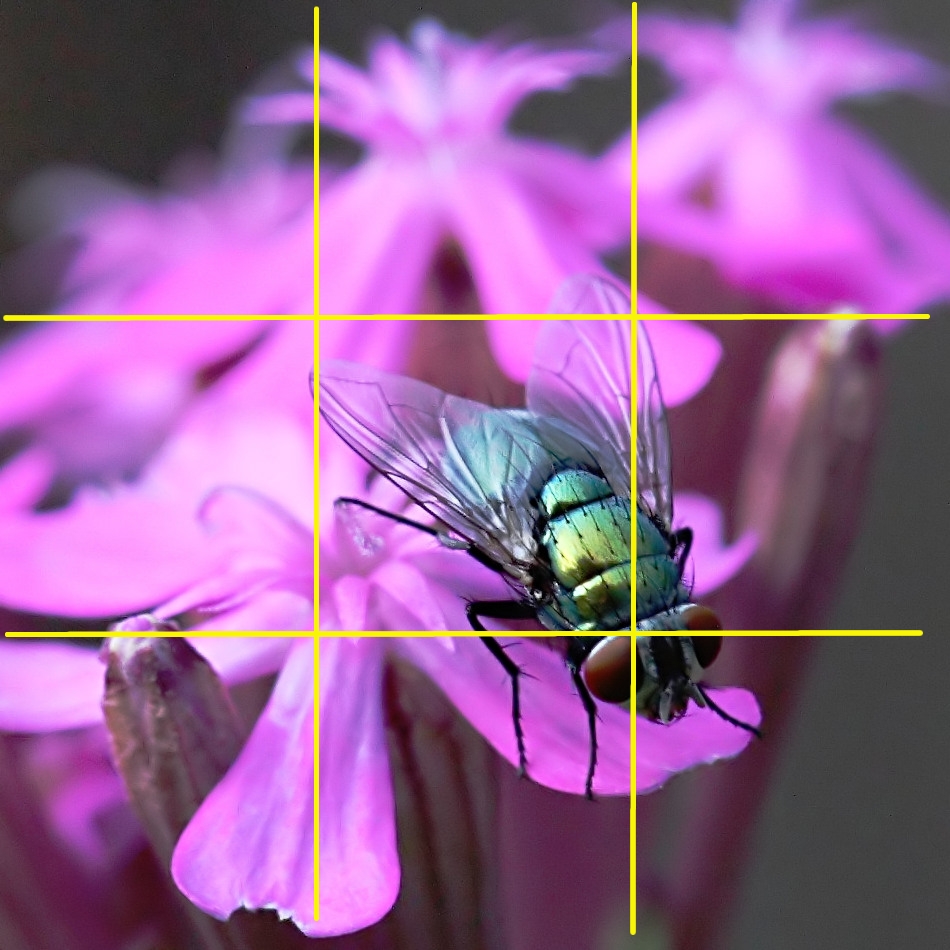



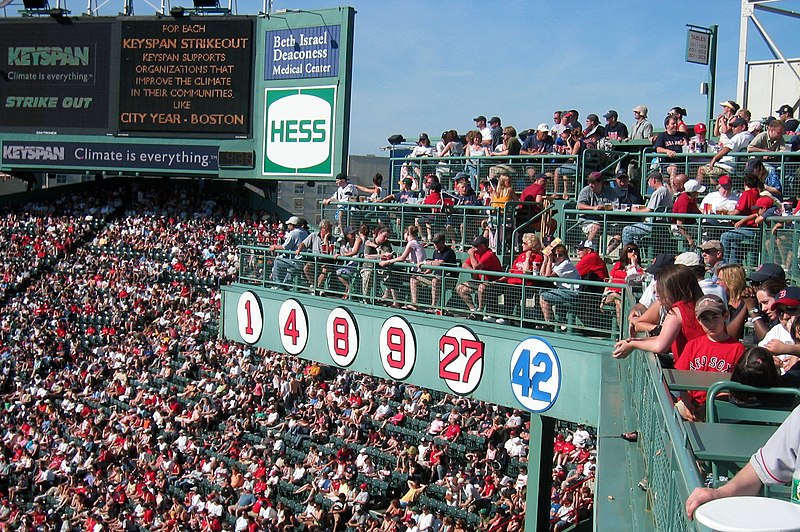






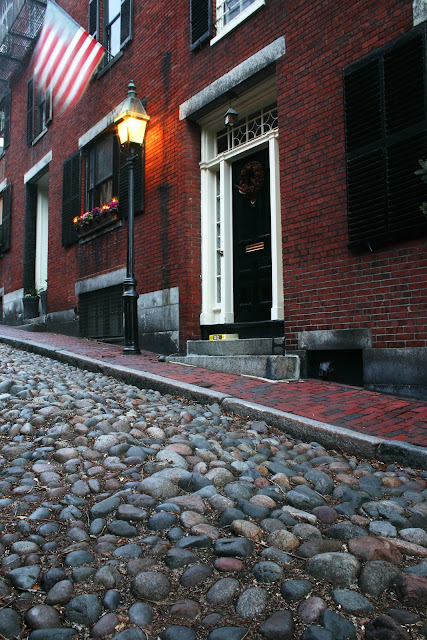


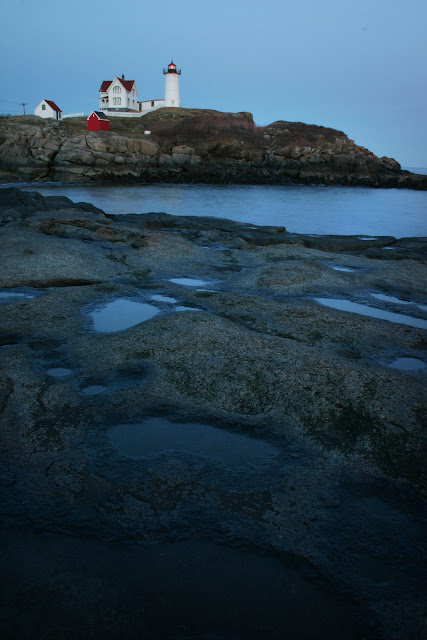

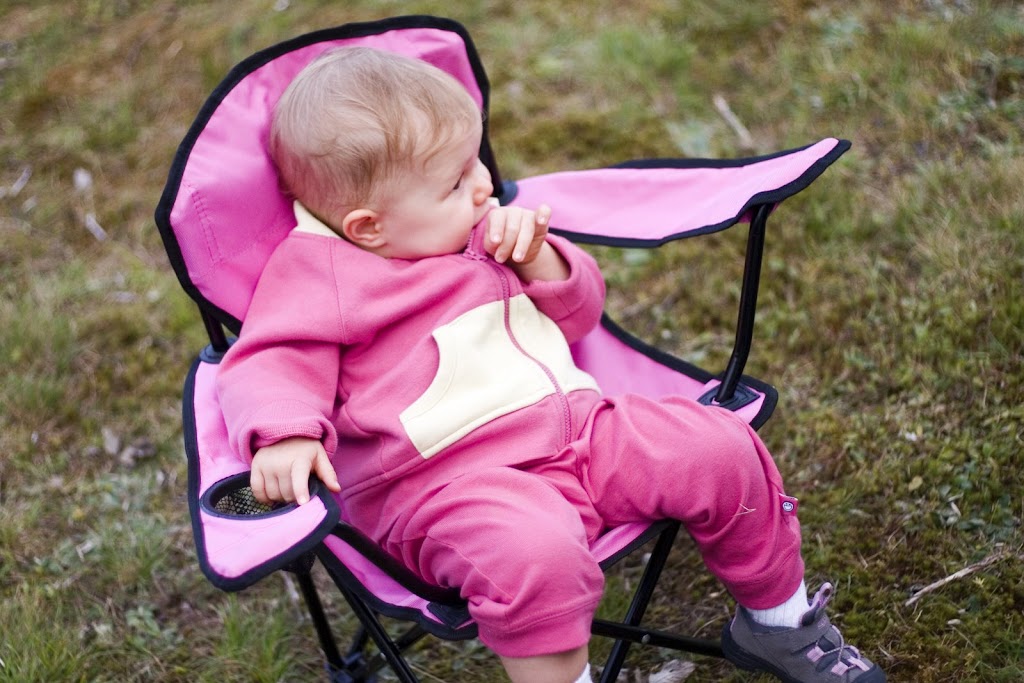


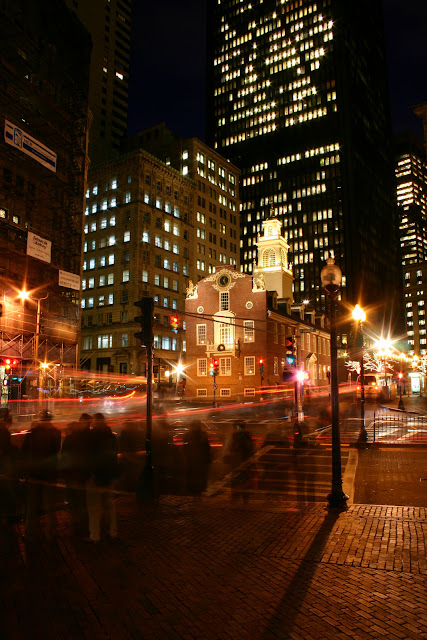



 Waits River, Vermont
Waits River, Vermont


